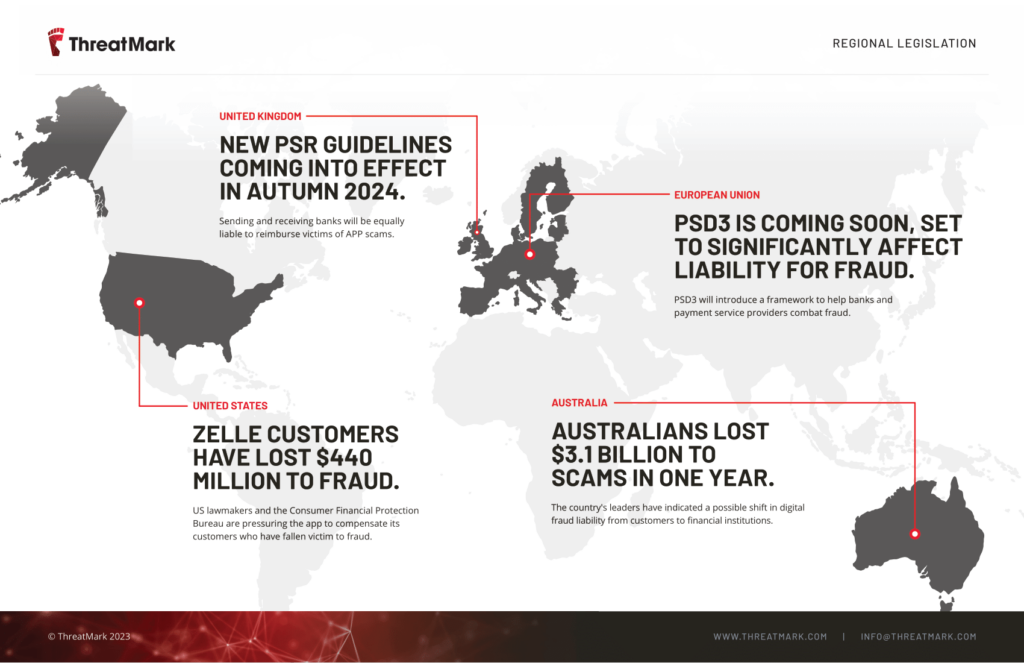
Exploring the Liability Shift: A Comprehensive Guide
Shifting liability for fraud losses represents a significant challenge for banks and payment service providers.
In response to the global surge in online fraud, regulators are introducing policies that transfer the cost of fraud from defrauded customers to financial institutions. Our newly released white paper, “The Liability Shift: Understanding Fraud Losses Responsibility and Mitigation,” provides an in-depth analysis of this shift, its implications, and strategies for effective fraud prevention.
This white paper addresses key aspects of the evolving liability landscape, including why fraudsters are increasingly successful, the reasons behind heightened regulatory scrutiny worldwide, and the expectations for future developments. It also outlines how banks and PSPs can prevent new types of fraud to safeguard customers’ finances and, most importantly, preserve their trust.
download the whitepaper

Acccess your copy of our infographic here.
Inside the white paper: Key focus areas
- Global Context of Payment Fraud: This section explores factors driving the rise in fraud, including the demand for faster electronic payments, the FinTech industry’s growth, and COVID-19-related changes in consumer behavior. With the global digital payments market expected to grow significantly and cashless transactions increasing, understanding the fraud landscape is essential.
- Understanding the Fraud Landscape: The shift towards cashless payments has led to a surge in online fraud. This section examines how fraudsters use advanced technologies and methods, including generative AI and social media, to commit fraud, with a particular focus on authorized push payment (APP) fraud.
- Compliance and Regulatory Considerations: With rising fraud incidents, there is a focus on liability standards and reimbursement policies. Regulations vary, but a common trend is the shift of burden from defrauded customers to entities with greater resources and defensive capabilities, especially banks and PSPs.
- Strategies for Effective Fraud Prevention: To combat fraud, banks and PSPs must deploy a range of strategies, including fraud prevention measures, real-time transaction monitoring, customer education, and improved authentication methods. Collaboration among financial entities and regulatory bodies is also vital.
- The Role of ThreatMark: Highlighting the effectiveness of behavioral intelligence in fraud prevention, this section showcases how ThreatMark’s solution significantly improves fraud detection rates, reduces false positives, and lowers authentication costs by analyzing a combination of device, threat, user identity, and payment information.
Download the white paper today to uncover insights into the global context of online payment fraud, discover the latest fraud tactics and strategies, and understand the shifting liability landscape. Learn about effective approaches to mitigate fraud losses and explore the advanced behavioral intelligence solutions provided by ThreatMark.


